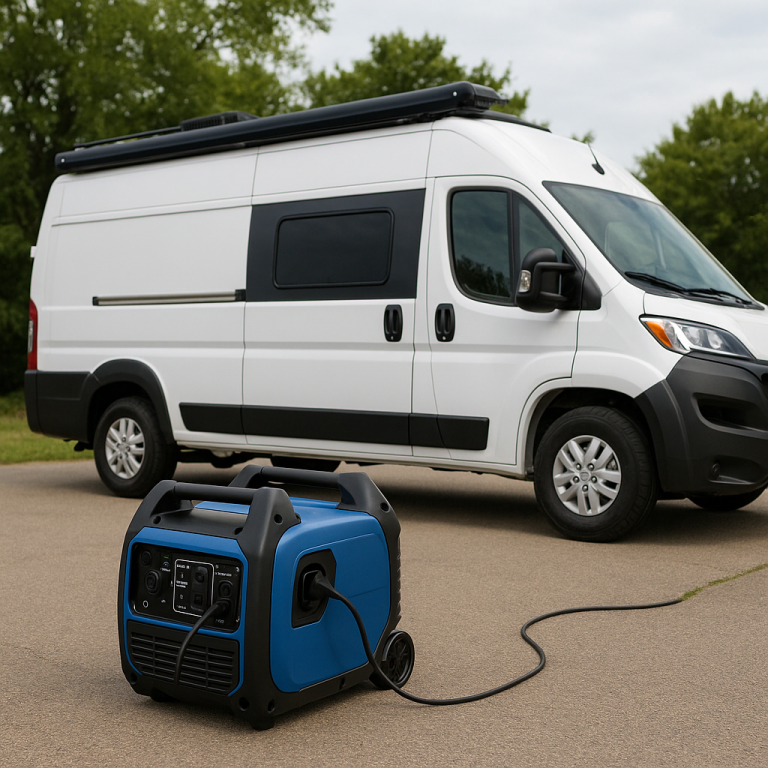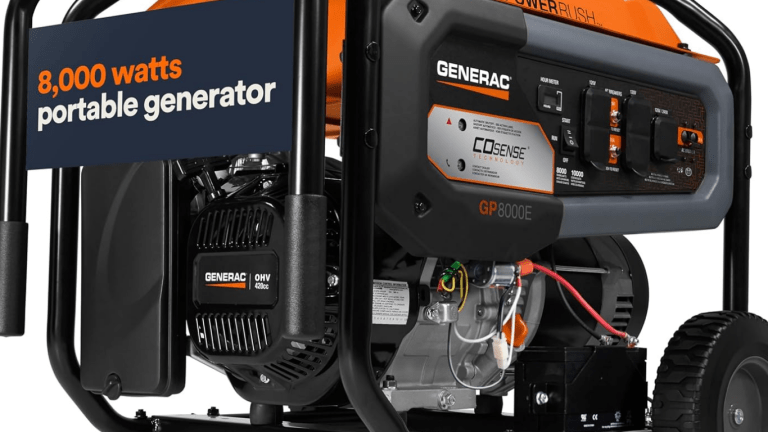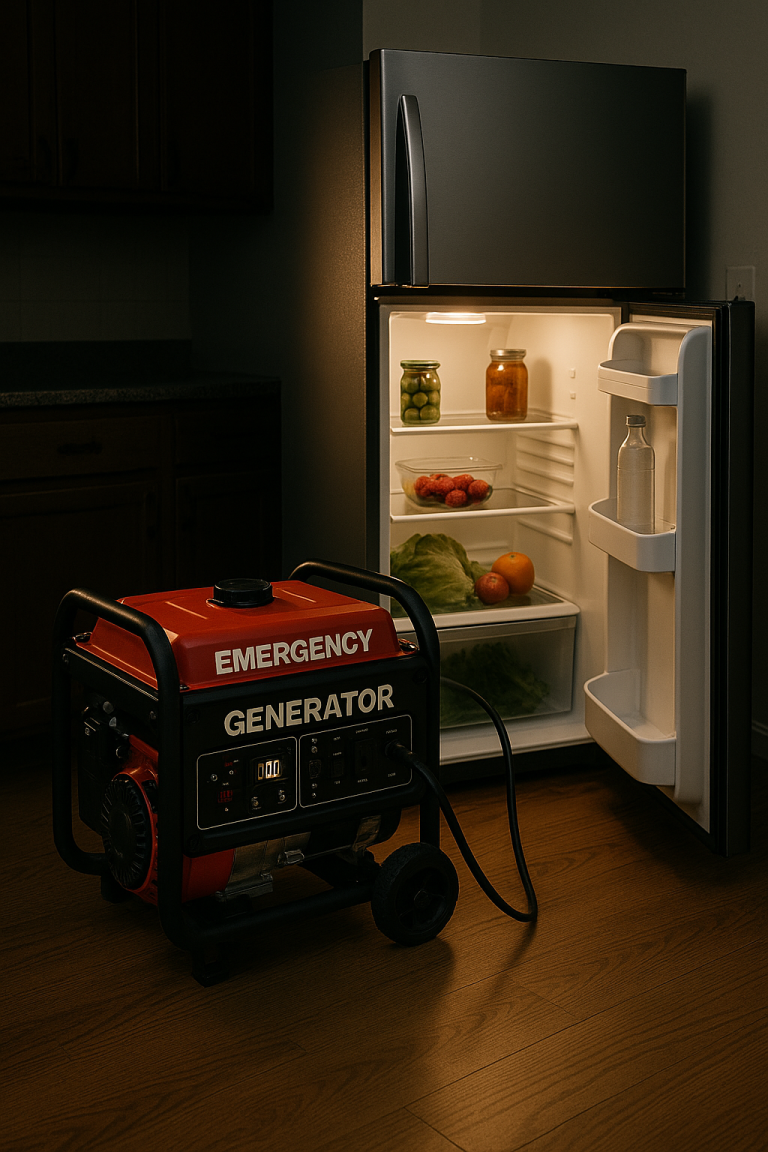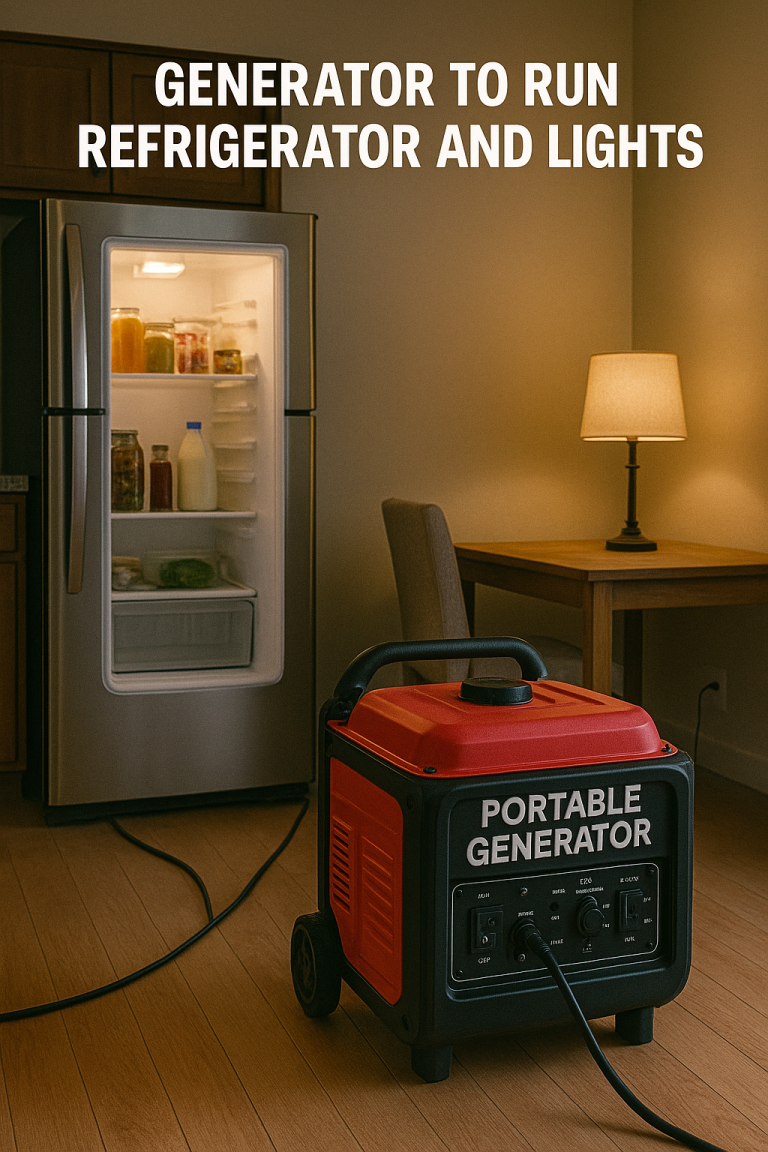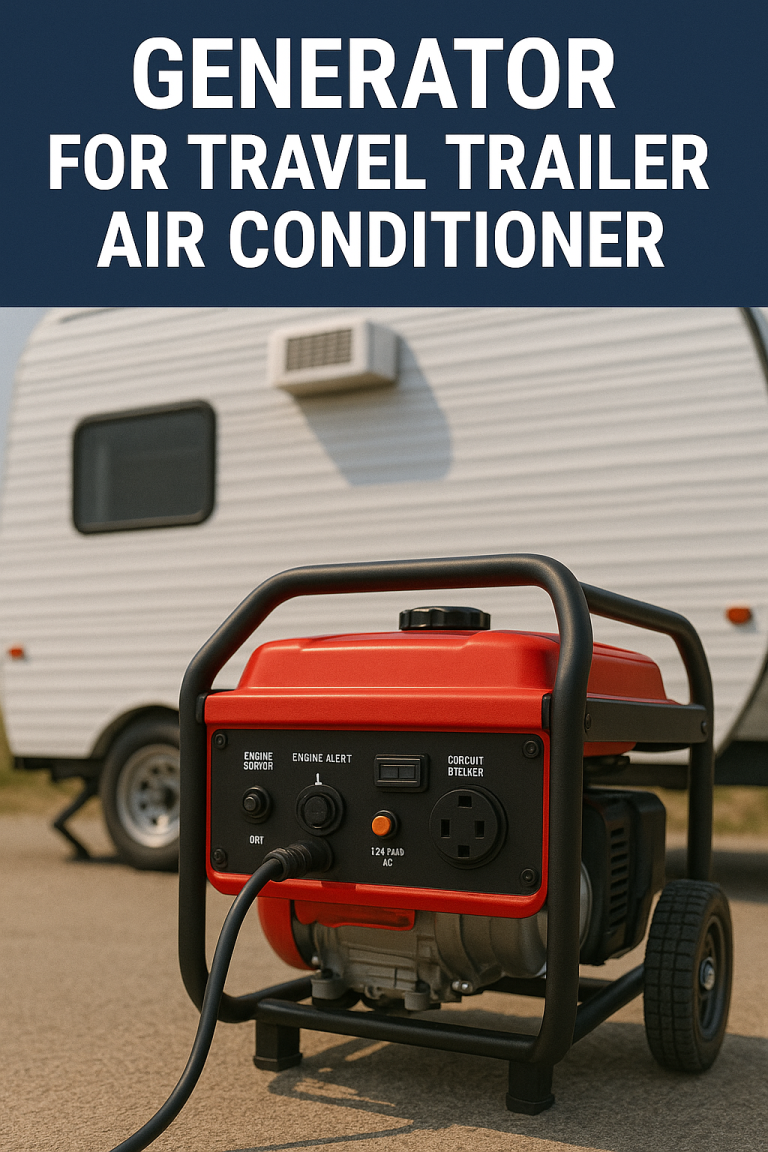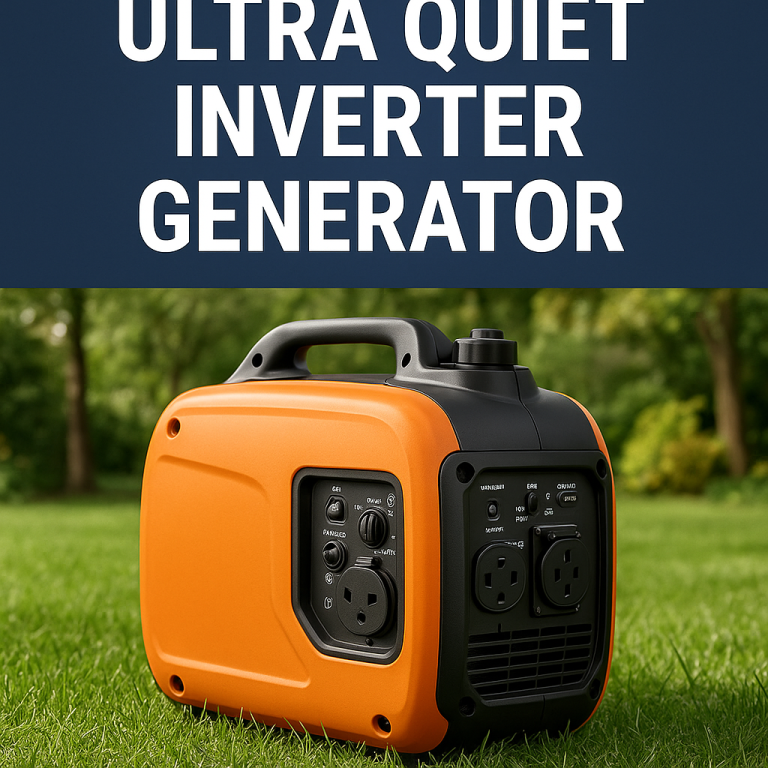Portable Generator with Electric Start and Remote – Power at the Push of a Button
Portable generators have come a long way from noisy, hard-to-start machines. Today, convenience and ease-of-use are top priorities — and if you want the simplest way to power your home, RV, job site, or outdoor setup, a portable generator with electric start and remote is a game-changer.
Imagine pressing a button from across the yard or from inside your RV to fire up your generator — no more pulling cords in the rain or struggling with cold starts. Whether you’re looking for backup power or portable energy on the go, these generators offer the perfect balance of performance, portability, and modern convenience.
In this guide, we’ll explore why electric start and remote-controlled generators are a must-have, what to look for, and how to choose the best one for your specific needs.
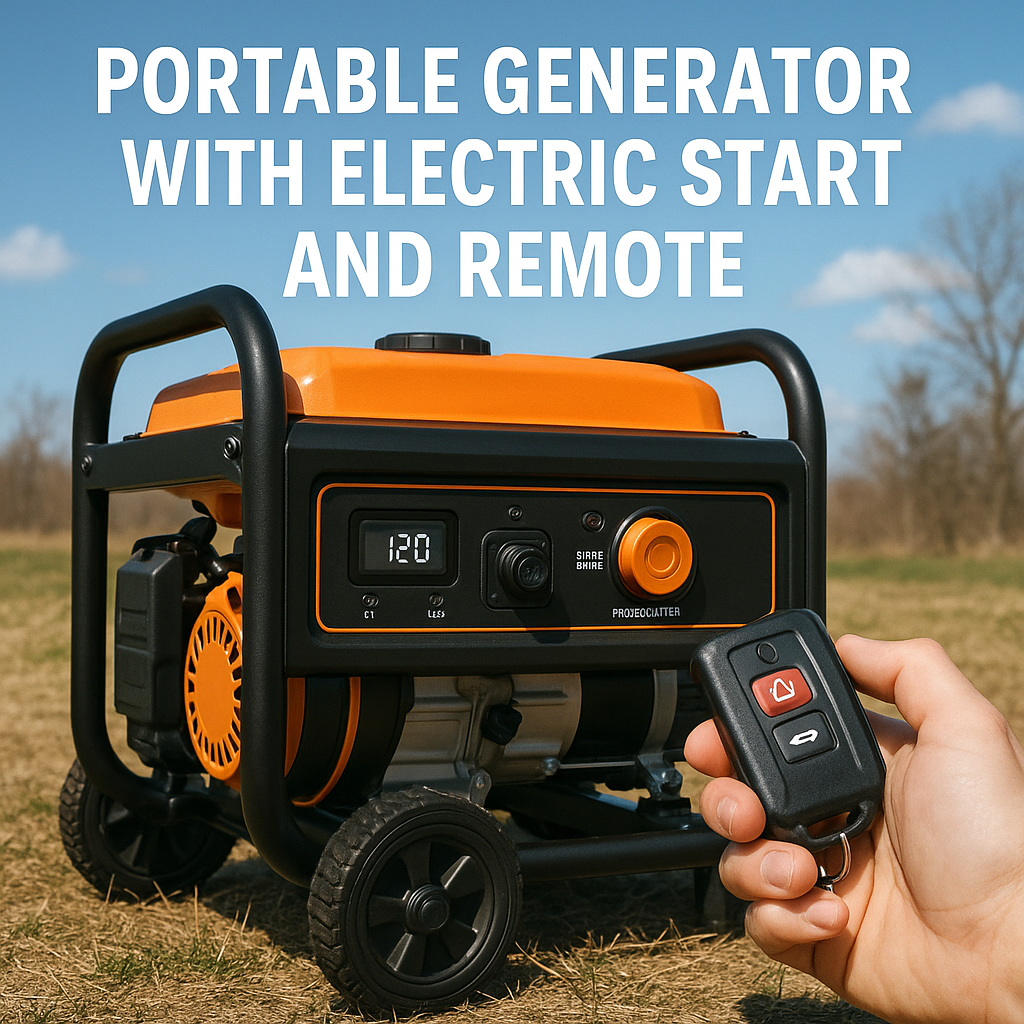
What Is a Portable Generator with Electric Start and Remote?
A portable generator with electric start features a push-button ignition system, often powered by an onboard battery. No manual recoil cord is needed — you just turn the key or press a button, and the generator starts instantly.
Add remote start capability, and you can start (and sometimes stop) the generator from dozens or even hundreds of feet away. It’s a massive upgrade in comfort and control, especially in cold weather or stormy conditions.
These generators typically offer:
- Push-button or key-start ignition
- Wireless remote start (often via key fob)
- Rechargeable battery system for electric starter
- Backup recoil start in case the battery dies
- Power outputs from 2000 watts to 10,000+ watts
Who Benefits Most from Electric Start and Remote Control?
Anyone who uses a portable generator regularly will appreciate electric start, but it’s especially useful for:
RV Owners
Start your generator without stepping outside your rig. This is perfect for hot mornings when you want to run the AC, or for charging batteries and powering appliances from inside the RV.
Homeowners
In a power outage, being able to start your generator from inside the house or garage (with proper placement outdoors) is not just convenient — it’s safer, too.
Contractors
On job sites, you can fire up your generator without walking across uneven terrain, wet ground, or mud every time you need power.
Elderly or Physically Limited Users
Electric start and remote operation reduce the physical strain of pulling a recoil cord — making backup power more accessible and stress-free.
How Many Watts Do You Need?
Choosing the right wattage depends on what you want to power. Here’s a quick breakdown of typical needs:
- Camping or tailgating: 2000–3000 watts (phones, lights, small appliances)
- RV with AC: 3000–4500 watts (fridge, microwave, air conditioner)
- Home essentials: 5000–7500 watts (refrigerator, sump pump, lights, outlets)
- Job site tools: 7000–10,000+ watts (multiple heavy-duty tools, lights)
Make sure to consider both running watts (continuous power) and starting watts (short bursts needed to start appliances). A generator with remote start should offer plenty of headroom to avoid overload shutdowns.
Must-Have Features to Look For
When shopping for a portable generator with electric start and remote, don’t just stop at the switch. Look for these key features:
Long Remote Range
Some remotes work up to 100+ feet away. That’s perfect for starting the unit from inside your RV, cabin, or house (while it runs safely outside).
Backup Manual Start
Even electric start generators should include a recoil backup. If the battery dies, you still have a way to get power.
Dual Fuel Capability (Optional)
Want flexibility? Choose a dual-fuel generator that runs on either gasoline or propane. Propane stores longer, while gasoline often provides more output.
RV-Ready Outlet
If you’re powering an RV, look for a TT-30R 30-amp outlet. This allows direct connection using your shore power cord — no adapters needed.
Inverter Technology (For Sensitive Electronics)
Some electric-start generators also feature inverter technology, delivering clean, stable power that’s safe for laptops, phones, and medical devices.
Large Fuel Tank and Long Runtime
You’ll want a unit that can run 8–12 hours or more on a full tank — especially for overnight backup or long job shifts.
Quiet Operation
Some electric-start generators are also ultra quiet, especially inverter models. Look for units with noise ratings under 60–70 decibels, particularly if you’ll be using it in a neighborhood, campground, or public space.
Safety Considerations
Even with remote convenience, generator safety still matters. Follow these tips:
- Always run the generator outdoors — never in a garage, basement, or enclosed space
- Position it at least 20 feet away from doors or windows
- Point the exhaust away from occupied areas
- Use heavy-duty outdoor cords
- Install a carbon monoxide detector if running near your home or RV
- Keep the generator dry — use a cover or canopy if needed
Maintenance Tips for Electric Start Models
These generators are low-maintenance, but they do require some care:
- Keep the starter battery charged — especially if the unit sits unused for months
- Run the generator monthly to keep the engine and battery healthy
- Check oil and fuel levels before every use
- Replace spark plugs and air filters on schedule
- Store fuel safely and use stabilizers if keeping gasoline for more than a few weeks
Pro tip: Some remote-start generators have battery chargers built in, so you can plug into shore power or wall outlets and keep the battery topped off without removing it.
Real-Life Use Scenarios
RV Camping
You wake up early, it’s hot, and you want to start the AC. With a remote-start generator, you press a button without even unzipping your sleeping bag.
Power Outage at Home
The lights flicker and go out. You go to the window, grab the remote, and start your backup generator — without stepping into the cold or rain.
Construction Site
You’re at the other end of the lot and need to start the power tools. One click from your key fob, and the generator roars to life, ready for work.
Final Thoughts: Convenience Meets Power
If you’re tired of yanking cords, fiddling with chokes, or running outside every time you need backup power, a portable generator with electric start and remote is the upgrade you’ve been waiting for.
To recap:
- Electric start = no more pull starts or cold morning struggles
- Remote start = control your generator from a distance
- Choose the right wattage based on your setup (RV, home, job site)
- Look for features like dual fuel, inverter tech, and quiet operation
- Follow safety best practices and keep the battery charged
Modern generators don’t just deliver power, they deliver comfort, speed, and reliability.
Click the link below:

Genpower 4.7kW Peak 3.8kW Inverter Generator, Push Button & Remote Start, Portable w/Wheels, Camping, Backup, Mobile A/C

